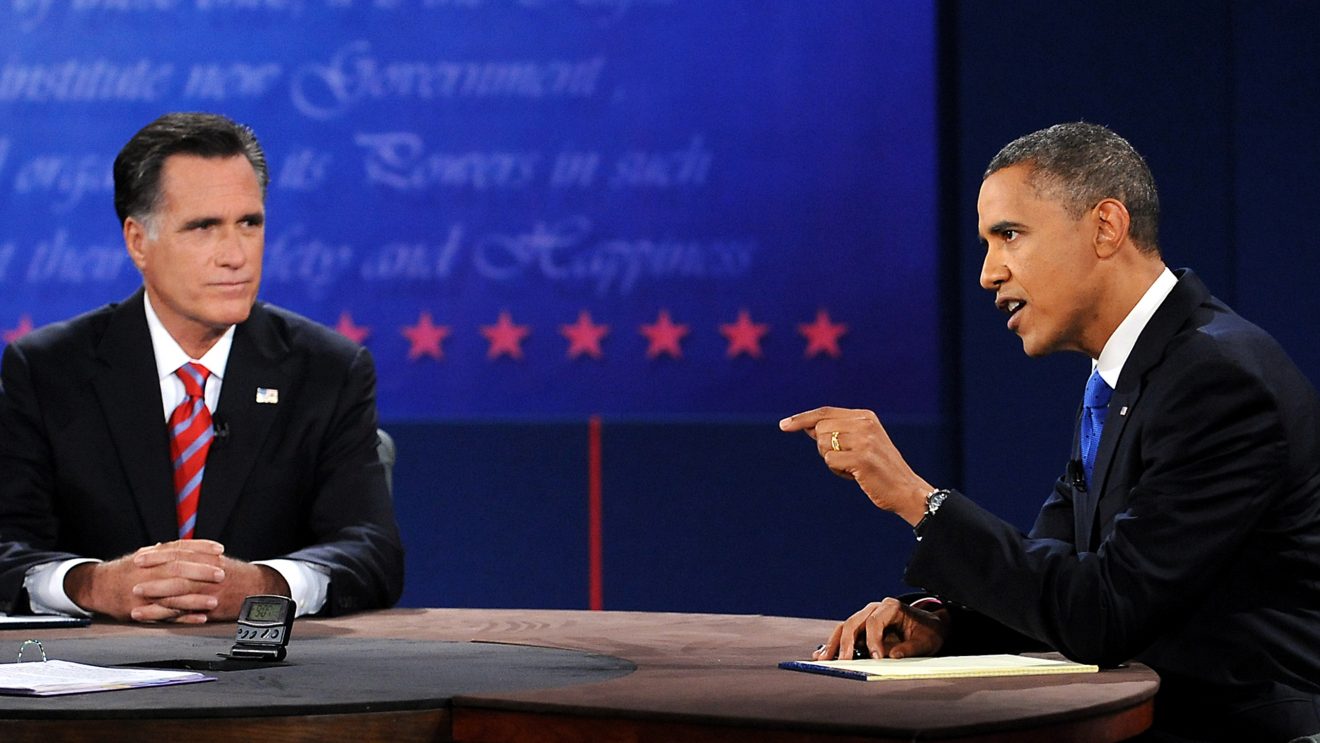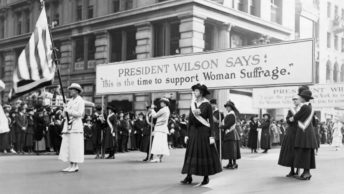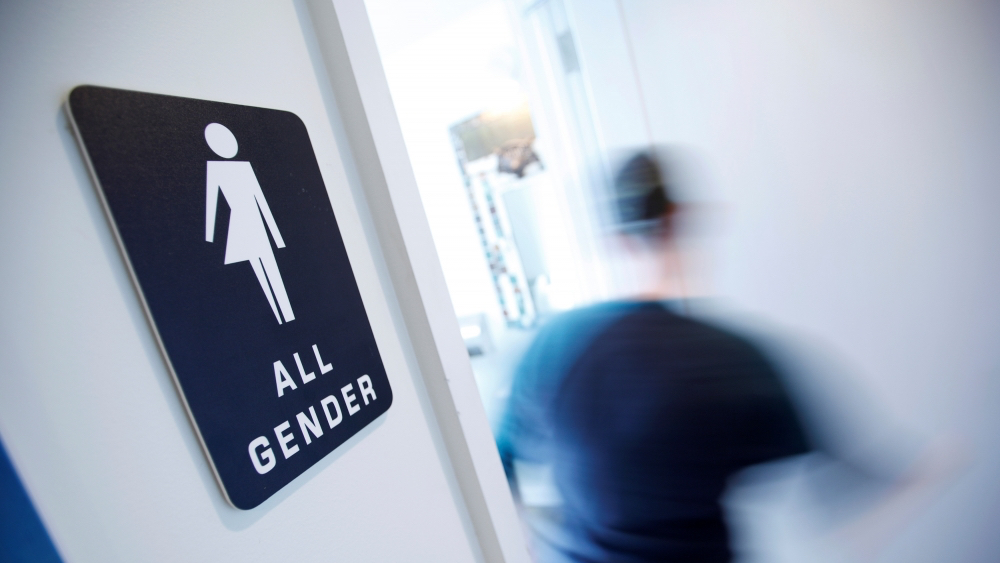James Brown, “The Godfather of Soul,” once famously sang “it’s a man’s world” and this statement would still hold very much true today in the modern American political arena. After the amendment to the US constitution was instituted almost 100 years ago allowing women to vote, progress has been made, but more needs to be done as we have not yet created a level playing field for women and men to enhance in their respective political careers equally. That being said, ever since gaining the right to vote and participating in the political and electoral process, more and more women have registered to vote. For example, 60.4% of female citizens 18 and older reported voting in the 2008 presidential election, whereas only 55.7% of men cast a ballot. In fact, in every single presidential election since 1980, the proportion of eligible female adults who voted exceeded the proportion of eligible men who voted by a fair margin.
However, despite such a high rate of women participating in the electoral process, female representation in the Senate and House remains low. Since the first elected Congress, of the over 12,000 people who have served in House or Senate, only 4% of them have been women. Similarly, merely five out of the current 50 US governors are women. Reasons for this low female representation in US politics include a lack of other female political role-models, less political ambition of many women, the rough political climate of campaigns with many personal attacks women tend to dislike, the general necessity to constantly ask for donations (an atmosphere which is more likely to favor men), as well as media – and public opinion – bias burdening many women with guilt and shame of a potential “double burden” they face when they have to choose between family and work.
This article focuses on and starts off with why it is crucial and beneficial to have more women in the upper echelons of the government and how the political discourse and decision-making can benefit from more female involvement. In addition, it examines and evaluates the impact of Sarah Palin’s nomination as the second woman Vice Presidential candidate and Hillary Clinton’s presidential campaign in 2008 as well as Clinton’s chances for 2016. The paper also offers an analysis of the current and future (i.e. past the 2014 midterm elections) situation of women in Congress, along with an analysis of the current status of females running for governor and a brief analysis of women in leadership positions in state legislatures. Finally, this article concludes with remarks about what can be done to further break the glass ceiling for women to achieve more success in US politics in the future.
As a disclaimer, this is a concise analysis of the current situation of women in American politics. It is my explicit goal to look at female candidates on both sides of the political spectrum, but I do not endorse any specific candidacies at this point in any of the races I will be mentioning.
1.) Why Women Should Be Represented More in Important Political Offices
It is imperative that we open doors for women to succeed in the political arena. When women are in the room, their voices are heard and the contours of the conversation change as well. As an example, when Kirsten Gillibrand, Senator from New York, or Claire McCaskill, Senator from Missouri, as members of the Senate Armed Services Committee discuss military sexual assault, this helps to define and tackle the problem as well as the solution. In addition to that, women often bring light to other crucial issues at the state and national levels that may not be discussed otherwise so extensively, like health care, educational inequality or child care.
That being said, women have an impressive track record in recent history of serving as catalysts for achievement and bringing forth change in a way that men probably would have been less likely to have done. Take, for instance, the case of Susan Collins, a Republican Senator from Maine, in the recent government shutdown in the fall whose story is told in a New York Times article from last October called “Senate Women Lead in Effort to Find Accord.” Dissatisfied with the lack of progress being made, Senator Collins, came out with a three-point plan that she thought both parties could potentially live with, trailed to the Senate floor and challenged her colleagues to come up with something better. A couple of days later, two other Republican female Senators enthusiastically signed on, including Lisa Murkowski of Alaska and Kelly Ayotte of New Hampshire.
Then, according to the aforementioned New York Times article, these three women “started a bipartisan group whose negotiating framework formed the centerpiece of a tentative Senate deal nearing completion […] to reopen the federal government and avert a disastrous default.” The article goes on to note that “in a Senate still dominated by men, women on both sides of the partisan divide turned out to be the driving forces that molded the settlement. The three Republican women put aside threats from the right to advance the interests of their shutdown-weary states and asserted their own political independence.”
In response to this, Senators Barbara Mikulski of Maryland – the longest serving woman in the US Senate – and Patty Murray of Washington were tough negotiators for the left and pressed their Republican counterparts to make concessions, but they also offered central points of compromise. Jointly, the five Senators epitomized the increasing power and influence of women in American Politics, especially in the Senate. For example, of the 13 Senators who worked on the framework of the deal on a bipartisan committee, about half were women, even though women make up merely 20 percent of the Senate. And, as the New York Times article states, Senator John McCain of Arizona even joked at several points in their meetings, “The women are taking over.”
Senator Joe Manchin III of West Virginia, Ms. Collins’s first Democratic collaborator, agrees and said about the shutdown solution “That gender mix was great. It helped tremendously.” He added, “Would it have worked as well if it had been 12 women or 12 men? I can’t say for sure, but it worked pretty well with what we had.” This was clearly a wonderful compliment for what great job women are doing in the Senate.
In December of last year, another news story broke out in which Senator Patty Murray – who is also the chairwoman of the Senate Budget Committee – once again played a key role as one of the two chief negotiators in a deal on the federal budget. She and House Budget Committee Chairman and Mitt Romney’s 2012 running mate, Paul Ryan of Wisconsin, had talked for weeks before. Then, very remarkably, they disclosed a proposal that would avoid most of the automatic spending cuts, or sequester that would have been due to take effect on January 15, 2014. If no budget had been passed by that date, the government could endure another partial shutdown – just like in October last year. According to the article, it was “arguably the biggest triumph of Murray’s 20-year Senate career, where she was half the architect of a deal that’s eluded negotiators for years.” The author also states that Murray’s role in the deal was no real surprise to analysts. “She’s been a steady force, a calm voice,” said Peter May, chairman of the University of Washington political science department. “She’s not a show horse. She’s not a bomb thrower. She’s a consensus builder.” With that in mind, there is now even some talk within the Democratic Party that Murray could move up the ladder and succeed current majority leader Harry Reid of Nevada, who is in his seventh year at the helm and already 74 years old, for the top senate job.
Lastly, I want to mention a widespread op-ed article written by billionaire investor Warren Buffett that was published in Fortune Magazine in May of last year. In that article, Mr. Buffett described very eloquently why women matter in business, how they are of key importance to America’s prosperity, and why they should hence be represented in higher numbers in influential positions. Buffett stated that “our secret sauce has been a political and economic system that unleashes human potential to an extraordinary degree. As a result Americans today enjoy an abundance of goods and services that no one could have dreamed of just a few centuries ago.” I could not agree more; more than half of the world’s population is female and, thus, statistically, more than half of the human potential – and, most likely, political talent – lies within females as well and just waits to be set free.
To conclude, all these examples show that women play a key role in increasing bipartisanship at a time when this is necessary, i.e. at a point at which the Republican Party in particular has become more divided within itself and needs bipartisan thinking to bring it more to the center again. A lot of women have recently shown that a bipartisan Washington does not necessarily have to be a utopia.
2.) Presidential Politics – Sarah Palin and Hillary Clinton in 2008. What are the Chances of Hillary Clinton in 2016?
Sarah Palin was the second female woman to serve as a Vice Presidential candidate of a major party ticket after Geraldine Ferraro was nominated as a presidential running mate by Walter Mondale in 1984. However, in some ways, Palin failed in making sure that her prominence served as inspiration for subsequent generations of women. Despite the great achievement of being elected to run on John McCain’s ticket, Palin did too little to encourage other women to seek office as well. To some extent, her presence on the ticket even actually led to the opposite effect (although that was not necessarily entirely her fault). But with women already having felt a strong media bias against them before, these concerns were aggravated by the campaign of Sarah Palin whom many perceived to have been treated unfairly in a sexist fashion and which thereby sent out signals to some women that made them even more reluctant to seek public office. That said, the Republican Party specifically has to do more to encourage women to seek public office. Because if the Republicans did their fair share getting more women running and elected, this would help close the gender gap (which is very much necessary as one can see from the attached statistics). Plus, it is not like the Republican Party does not have any female role models and possible Republican presidential contenders. Governor Nikki Haley of South Carolina, or Governor Susana Martinez of New Mexico (although she has stated she would not be interested in running for President), among others, would look very promising as highly electable leaders and would be very viable for a Republican presidential ticket – both for the position of President as well as Vice President.
Shifting the focus to Hillary Clinton, her 2008 campaign was extremely successful and she was very close to winning it. In fact, based on her experience, she was by far the most viable female candidate who ever ran for President in US history. However, with the unexpected emergence of Barack Obama, Clinton astonishingly lost the Democratic nomination to him. But having been within such close reach of getting her party’s nomination in 2008, Clinton now stands a good chance of being elected in 2016 and would be a formidable Democratic candidate if she decides to run (which, according to most political observers, she is likely to be doing). She has a strong name ID, a lot of experience (as First Lady, Senator for the State of New York, and Secretary of State), access to a powerful network of donors and she has likely learned from some of the mistakes she made in her 2008 campaign. In addition, because she was so close to winning the Democratic nomination in 2008, there exists the general belief in the party that Hillary Clinton “really deserves” the nomination; consequently, other candidates will be reluctant to run against her. Additionally, being a woman can potentially play out as a huge advantage for her as it would give her campaign a revolutionary allure and cachet once again. Consequently, in a recent speech at the Clinton Global Initiative, she has already made clear that, if she runs for President in 2016, the history-making nature of the bid as the first female presidential candidate will be the center of her campaign- which I think is the right way to go because in a post-feminist world, the historic dimension of having the possibility to elect the first woman-president to the White House needs to be emphasized.
The role women play in determining the outcome for the Presidency should not be underestimated. Many believe that after Hillary discontinued her campaign, most Hillary supporters gave Obama resounding support among women – ultimately resulting in a gender gap of 7 percent in the election. Accordingly, Obama’s women support (56%) was larger in 2008 than Kerry’s back in 2004 (51%). With Obama being that popular among women, McCain also did worse with women voters, attracting only 43%, compared to Bush’s support amongst women at 48% in 2004. Women vote in greater numbers than men and they vote for Democrats in greater numbers than men. Thus, their influence is immense, particularly for the Democratic Party.
3.) Progress Made in Congress between 2005 and 2013 and Outlook to 2014 Midterms Elections
In 2013 (i.e. the 113th Congress), women hold 18.5% of the seats in the House and 20% of the Senate. Before that, in the 112th Congress (2011-2013), women held 16.8% of the seats in the House and 17% of the Senate, in the 111th Congress (2009-2011), women held 16.8% of the seats in the House and 17% of the Senate, in the 110th Congress (2007-2009), women held 16.6% of the seats in the House and 16% of the Senate and in the 109th Congress (2005-2007), women held 15.6% of the seats in the House and 14% of the Senate. This is a huge improvement compared to 1980s when, for instance, in the 99th Congress (1985-1987), there were only two female Senators (i.e. 4%) and 23 women in the house (i.e. 5.2%). These numbers show that the trajectory is clearly positive – if, however, possibly not positive enough in the most recent years to achieve gender parity.
For 2014, the chances for women are not bad and some strategists have actually already declared 2014 as the “Year of the Woman.” In 2012, President Obama partly won because of strong support from women, and Democrats gained seats in the Senate and House. Now, Democrats are pushing to carry that 2012 “gender gap” over to 2014. They believe “the slate of prominent women on the 2014 ballot will make the contrast with Republicans all the clearer.” In the Senate, two of the four most endangered Democratic incumbents, Senators Kay Hagan of North Carolina and Mary Landrieu of Louisiana, are women. Natalie Tennet is also trying to keep a toughly contested West Virginia seat. That said, a lot of these female candidates are running in tough places this year, i.e. red states Mitt Romney won, or against entrenched incumbents. While they are not favored to win, party operatives believe they give the Democratic Party the best shot in such antagonistic political territory against Republicans, who – according to some strategists – have shown some problems clearly defining positions and convincing women on issues particularly germane to them in the past.
4.) Current Situation of Female Governors and Outlook to 2014 Gubernatorial Elections
As previously mentioned, there are presently merely five women right now who serve as governors. So, while women have made huge gains in the House and the Senate, they have had more trouble breaking into governorships.
According to some observers, the upcoming midterm elections in 2014 could witness an increase for women as state top executives. It has been confirmed by the Center for American Women in Politics at Rutgers University in New Jersey that 27 women have filed for governor’s races around the country so far; almost ten in open-seat races, 13 as challengers and four as incumbents (i.e. the four out of the five sitting governors seek to be re-elected). Two states with top female recruits will see woman-versus-woman primaries – Pennsylvania and Massachusetts. In Pennsylvania, Rep. Allyson Schwartz is one of the front-runners in the Democratic race to take on unpopular incumbent Gov. Tom Corbett. Also running on the Democratic side is former state environmental protection director Katie McGinty. In Massachusetts, state Attorney General Martha Coakley faces a primary that includes former Boston Globe columnist and national security expert Juliette Kayyem. Allyson Schwartz and Martha Coakley in particular have especially good chances to end up in the governor’s mansion if they win their respective primaries.
The state that has gotten the most media attention by the mainstream media, however, is Texas where Senator Wendy Davis is running for the governor post. Senator Davis, however, faces a very uphill battle against the traditionally strong Republicans in the conservative state (her most likely opponent is considered to be Republican Attorney General Greg Abbott). Potentially, her seasoned campaign manager, Karin Johanson – who visited one of my government classes at Georgetown last October –, can help her craft a winning strategy and help her go through some of the media struggles and criticism she has already faced, specifically with regards to having attended Harvard Law School while her two children mostly stayed in Texas. After all, Johanson, who managed the bid of US Senator Tammy Baldwin, the first openly gay member of the U.S. Senate and first woman in Wisconsin to hold the post, is no stranger to running uphill battles as Baldwin won against long-term Senator Tommy Thompson who was considered “unbeatable” by many before Baldwin ran.
Adrienne Kimmel, executive director of the Barbara Lee Family Foundation, which has done extensive research on female candidates stated that “in some ways, the ultimate glass political ceiling has been governorships.” Electing more women as top state official would hence send a strongly positive and optimistic message to women and girls that the glass ceiling has been cracked even more. This is particularly necessary after a disappointing race in the recent gubernatorial elections in New Jersey where Barbara Buono was running against incumbent Chris Christie and lost by a landslide.
5.) Female Leaders in State Houses
In terms of women in state legislatures, great progress has been made. Whereas in 1970 only 4.5% of state legislators were female, today more than 24.3% of state legislators are women. The state of New Hampshire could possibly become a role-model for other parts of the country as the progress made in this state is impressive.
In New Hampshire, women lead in the state’s two Congressional seats, making it the first state in the nation’s history to ever send an all-female delegation to Washington. And the “matriarchy” goes further; the governor of New Hampshire is a woman, just like the Chief Justice of the Supreme Court of this State and the Speaker of the House.
The state after New Hampshire with the next highest proportion of women in its Congressional delegation is Hawaii, where both House members and one Senator are women. In only three other states – i.e. Maine, Missouri and Washington – women make up at least half of the delegations. Sixteen states, including New Jersey, have no women in Congress.
Additionally, Vermont has shown a lot of progress when they showed a large representation of 37.8% of women in state legislatures after the 2008 election, making it the number one state in female representation. Recently, Vermont has set a goal to prepare women for the 2014 elections through a state-wide organization focused on recruitment, training, and mentoring female candidates and aspires to become the poster child opening doors for women in politics. This will potentially have a huge impact on the upcoming 2014 elections because women are likely to participate in large numbers and with more confidence in politics than before. So, quite possibly more good news will come from Vermont in the near future with regards to women breaking new barriers in politics.
6.) Breaking the Glass Ceiling Once and For All
A closer analysis of the upcoming midterm elections in 2014 already indicates that the elections will offer a great opportunity to get even more women elected. Thus, little by little, the glass ceiling can be cracked more and more. The prominent position of women in key Senate committees, the fact that women played a key role producing a budget agreement – that eventually led to the end of the government shutdown and the reopening of the federal government –, and the increasing number of female role-models in high political offices will contribute its part to make a career in politics and public service for women more appealing.
After Hillary Clinton’s unsuccessful run for the Democratic presidential nomination, she said in her concession speech that while she was unable to break the glass ceiling “there are now about 18 million cracks in it.” Quite possibly, this glass ceiling (and many media biases) will be completely shattered past 2016 as she has great chances to write history and become the first female President of the United States. In turn, this will likely encourage women to become active politically and run for office themselves. And the more women will be on top, the more likely it will be that women start to serve as mentors for one another, which is of paramount importance. Quoting former Secretary of State and Georgetown professor Madeleine Albright whose foreign policy seminar I am taking this semester, “There is special place in hell for women who don’t help other women.”
Hillary Clinton, if elected, could – even more than she already does today – become a new rallying point of the empowerment of women in America. Germany has shown that it works – Angela Merkel as the first female chancellor has approval ratings that are through the roof and just last year was reelected for a third time. In addition, she just appointed Ursula von der Leyen as the first female Minister of Defense of Germany. Through this unexpected appointment, there is much speculation now that Ms. von der Leyen could be groomed to become Germany’s second female chancellor in 2017.
After having three women serving as Secretary of State, four as Supreme Court Justices, one woman Speaker of the House and – just recently – the first woman to serve as the Chair of the Federal Reserve, I believe a Hillary Rodham Clinton presidency seems could be considered “the next logical step” and, regardless of one’s political affiliation, could become a major force showing women and girls once and for all that they can achieve everything – including becoming president – if they are strong, have convictions, challenge societal norms and do not ever give up. In line with other important feminists who have fought for women’s rights in this country throughout the 20th century, Secretary Clinton could “pave the way” for subsequent generations of women, so that they may hopefully come across fewer gender-specific barriers in their political careers. Just like Barack Obama’s election in 2008, Clinton’s campaign would widen our understanding of what leadership means and inspire women and girls to re-think the boundaries of the word “possible.”








